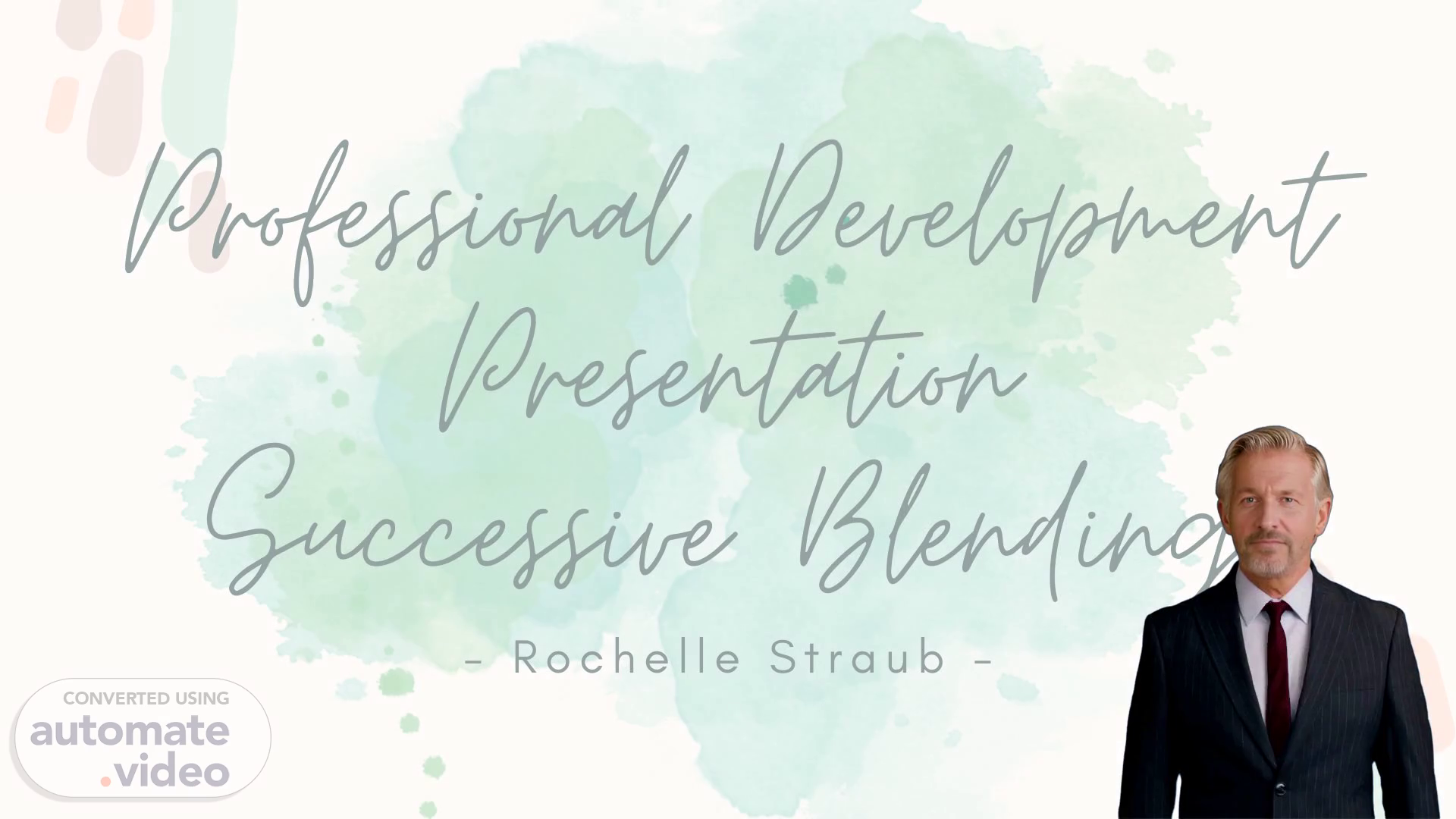
Page 1 (0s)
[Virtual Presenter] Welcome everyone! Today, I am going to discuss how Rochelelle Straub's company provides Professional Development Presentation Successive Blending, a phoneme blending strategy that helps students decode words who know letter sounds but struggle to do so. I will be demonstrating how this approach can make a positive impact on a student's learning in the classroom. So let's get started..
Page 2 (25s)
[Audio] For the Rochele Straub's Professional Development Presentation on Successive Blending, we will look at Scenario A which involves a teacher demonstrating a word - such as "sad" - to a small group of students. The students first correctly sound out the individual letters making up the word, then read the word. Once the students have correctly read the word, the teacher introduces more complicated words with blends such as "sat", "ad", "dads", and "sab". Doing exercises such as these can help students gain more confidence in reading..
Page 3 (0s)
Introduction S u c c e s s i v e B l e n d i n g i s a p h o n e m e b l e n d i n g s t r a t e g y t h a t c a n h e l p s t u d e n t s w h o k n o w l e t t e r s o u n d s b u t s t r u g g l e t o d e c o d e s u c c e s s f u l l y ..
Page 4 (1m 13s)
[Audio] Sellika Reese provides techniques for teaching blending through connecting classroom concepts to real-world scenarios, using examples to reinforce understanding, and providing interactive activities to help students practice what they've learned. This can create a unique learning experience that focuses on individual student needs and help them recognize patterns and apply their knowledge more effectively..
Page 5 (1m 36s)
[Audio] Having a firm understanding of the theoretical framework behind complex concepts is essential for professionals to make informed decisions. It is key to remember that this framework should be adapted to the different contexts and settings in which the decisions are made, so the outcomes are optimized. With this knowledge, professionals will be better prepared for their work..
Page 6 (1m 59s)
[Audio] Rochele Straub suggests that by researching and combining experiences and abilities, one can arrive at the phrase: 'Lorem ipsum dolor sit amet, consectetur adipiscing elit. Vivamus scelerisque eros sit amet augue suscipit vehicula. Suspendisse elit nibh, molestie nec sapien consequat, aliquet volutpat sem. Maecenas non massa urna.' To have a better idea of what this could look like, let's take a look at it..
Page 7 (2m 32s)
[Audio] Rochelle Straub's Blending Cards is a great resource to aid students in learning to blend sounds together to form words. The cards provide a fun and effective way of teaching students how to blend the initial two sounds, then the final sound, for improved reading accuracy. Through the use of visuals, students can practice blending phonemes to read entire words. This tool gives students the opportunity to become better readers by teaching them the importance of blending initial and final sounds. Furthermore, students can have fun while mastering the skill of reading..
Page 8 (3m 9s)
[Audio] Students will be engaging in the successive blending and color activity. They will use pictures to match a CVC puzzle piece to the corresponding final sound piece. Blending the CVC word and coloring the matching picture will help students to practice their phonics and enhance their reading and writing skills. With continuous guidance and practice, students can become competent readers and writers..
Page 9 (3m 35s)
Activities S t u d e n t s w i l l p l a c e a m a g n e t i c c h i p d o w n f o r e a c h s o u n d t h e n b l e n d w h i l e p i c k i n g u p c h i p s w i t h a m a g n e t i c w a n d . M A N I P U L A T I V E S.
Page 10 (3m 48s)
[Audio] I would like to discuss the concept of 'Successive Blending', which is a method for teaching children to read words through auditory word identification by blending and manipulating sounds to decode words. It is most effective when children have already been introduced to the sounds of the alphabet and the sounds that make up words. Successive Blending plays an important role in learning to read, as it helps children to identify and blend sounds in order to pronounce words correctly. For more information on the use of Successive Blending as a teaching strategy, I have included several references in my presentation which could be used for further review..
Page 11 (4m 27s)
Thank you!.